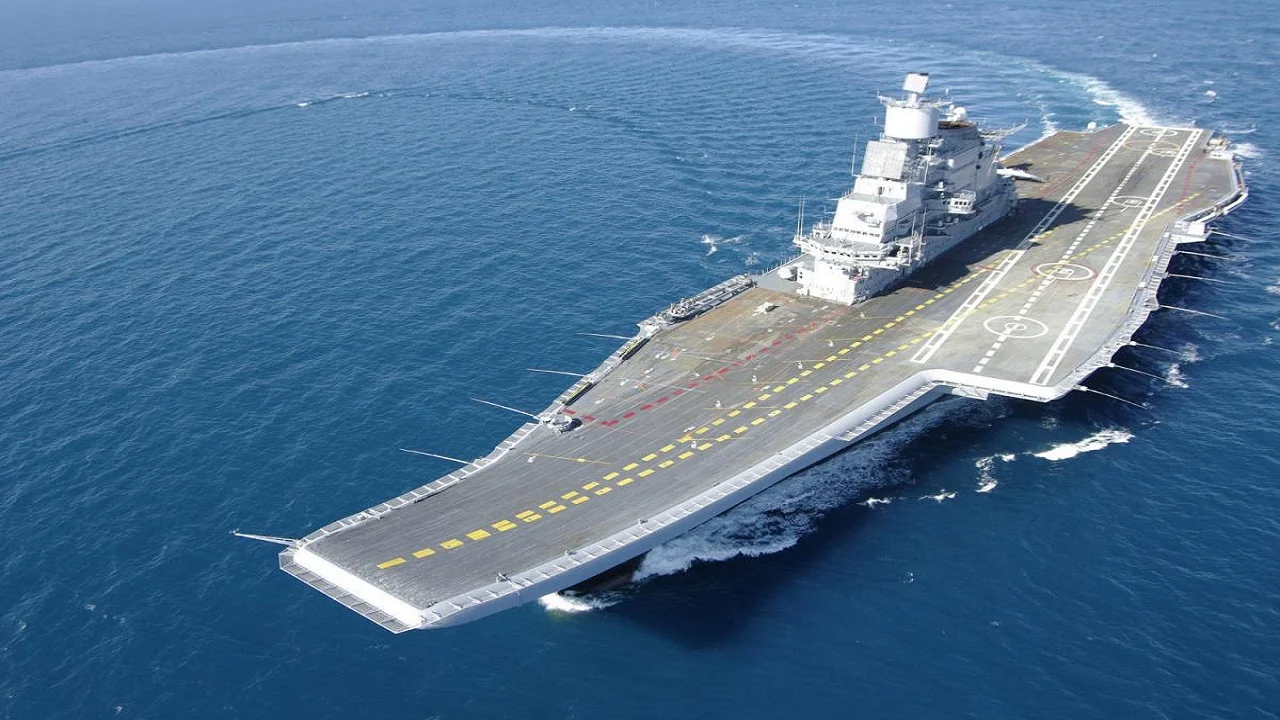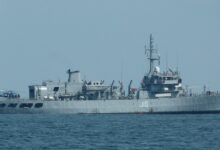India Will Soon Have Two, As The Argument Over A Third Aircraft Carrier Continues

- The Indian Navy currently operates 15 conventional submarines, as well as the (SSBN) INS Arihant, a nuclear ballistic missile submarine.
- According to reports, the Indian Navy is preparing the plan for IAC 2, or INS Vishal, another indigenously built aircraft carrier.
India will soon bolster its naval capabilities as “INS Vikrant” is prepared to be commissioned into the Indian Navy on the country’s Independence Day after successfully completing its fourth round of sea testing.
India’s largest indigenous warship, code-named IAC-1, is 44,000 tonnes in weight. The INS Vikrant was built by Cochin Shipyard Limited (CSL), a public sector shipyard that is under the Ministry of Shipping, and was designed by the Directorate of Naval Design (DND) of the Indian Navy.
As of right now, India only possesses one aircraft carrier, the INS Vikramaditya. It has Russian roots. The IAC-1, a Rs 23,000 crore ($3 billion) aircraft carrier named after India’s first aircraft carrier, INS Vikrant, a 19,500-ton vessel used by the Navy from 1961 till 1997, was developed. In the Indo-Pak War of 1971, it was essential.
The Indian Navy will use the IAC-1 as its fourth aircraft carrier. In 1961 and 1987, respectively, India purchased the INS Vikrant and INS Viraat from the UK and put them into service. INS Vikramaditya, a ship in the Kiev class that was purchased from Russia in 2013, was. The INS Vikrant will fly MH-60R multi-role helicopters, Kamov-31 helicopters, and MiG-29K fighter jets.
A command and control vessel that simultaneously serves as a mobile airbase is an aircraft carrier. They are more than just weapons of war, though. They also perform a military diplomatic function.
India has a 7,500 km long coastline. The Bay of Bengal, the Arabian Sea, and the Indian Ocean all encircle the nation to its east, west, and south, respectively.
The INS Vikrant’s Indian-made status offers it a further competitive edge and boosts India’s make-in-India campaign’s legitimacy. Either the British or the Russians built the first aircraft carriers. With the commissioning of the Vikrant, India will join a small group of countries that are able to construct aircraft carriers, including the US, the UK, Russia, France, and China.
The INS Vikrant is believed to be 262 metres long, 59 metres tall, and 62 metres wide. It is said to have 2,300 compartments and 14 decks.
Debate on 3rd carrier
There is a heated argument about whether India needs more submarines or aircraft carriers. The Indian Navy currently operates 15 conventional submarines, as well as the (SSBN) INS Arihant, a nuclear ballistic missile submarine.
Another topic of conversation is the requirement for a third aircraft carrier. It is stated that while one is getting maintenance, the third carrier can make sure that two are always prepared for fight. According to reports, the Indian Navy is preparing the plan for IAC 2, or INS Vishal, another indigenously built aircraft carrier.
According to the Navy, a third aircraft carrier is essential for operations. General Bipin Rawat, the late Chief of Defence Staff, believed that the Navy did not require aircraft carriers. The Navy is in denial.
According to Admiral Shekhar Sinha, India needs to construct one additional carrier to bring the total to three.
“We only have one aircraft carrier at the moment. In terms of air power at sea and consequently air defence & air superiority in the Indian Ocean, any maintenance will make it unavailable. For the protection of both the Eastern and Western seaboards, India requires two operable carriers at all times. Accordingly, two operating carriers and one under maintenance will be available at all times thanks to a total of three carriers. The replacements must therefore be constructed far in advance of any of the three carriers’ service life expiration.”
In actuality, conflicts depend greatly on submarines and aircraft carriers. Submarines are renowned for their stealth and capacity for lone-wolf strikes, and aircraft carriers can be useful in bringing the conflict to the enemy’s territory.
“Submarines vs carriers is a long-standing argument. Because each kind of platform has a certain function to fulfil, they shouldn’t be viewed as alternatives. To imply that legs may serve as hands would be absurd “stated Admiral Sinha.
“It is necessary to create Navies as a five-dimensional force. Air, space, the subsurface, and cyber. If we must serve as a regional power, there is no other option “said the Admiral.
In an interview with News9, Captain DK Sharma, a former Navy spokesperson, stated that India needs three carriers. “If you look at the grander ideas, you will see that we have been striving to achieve it. If you look back in time, the first aircraft carrier arrived in the 1960s and was useful during the war in 1971. The second carrier, Viraat, arrived in 1987 after that. They both worked together. The authorisation for the replacement carriers was already in place when the first one was laid off. That is what Vikramaditya in 2014 represented.”
He emphasised the importance of adding another aircraft carrier. “In order to adequately protect both the east and west coastlines of India, we had to lay off Viraat in 2017, and we were in desperate need of another carrier. INS Vikramaditya and INS Vikrant are the two operational carriers we will have at this time. The third one’s plans are still being developed.”
Then he continued, “It is impossible to compare carriers and submarines on the basis of their respective functions in the military. People who are familiar with the Navy are highly knowledgeable about this topic; they are aware that all the assets, whether they be drones, aircraft carriers, strategic submarines, or submarines, need to be carefully balanced. I believe we can put that in the hands of our top leadership and planners.”







Facebook Comments